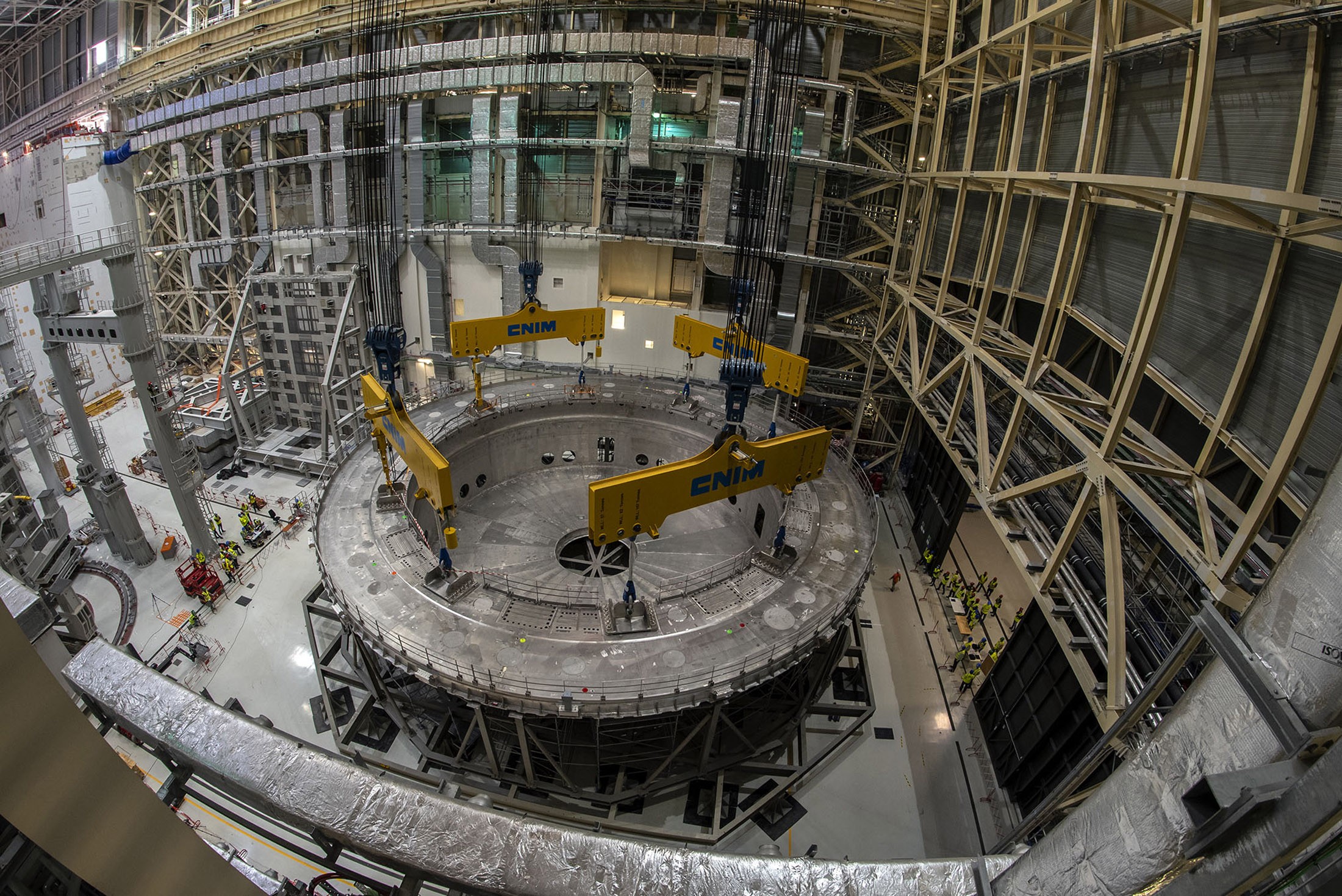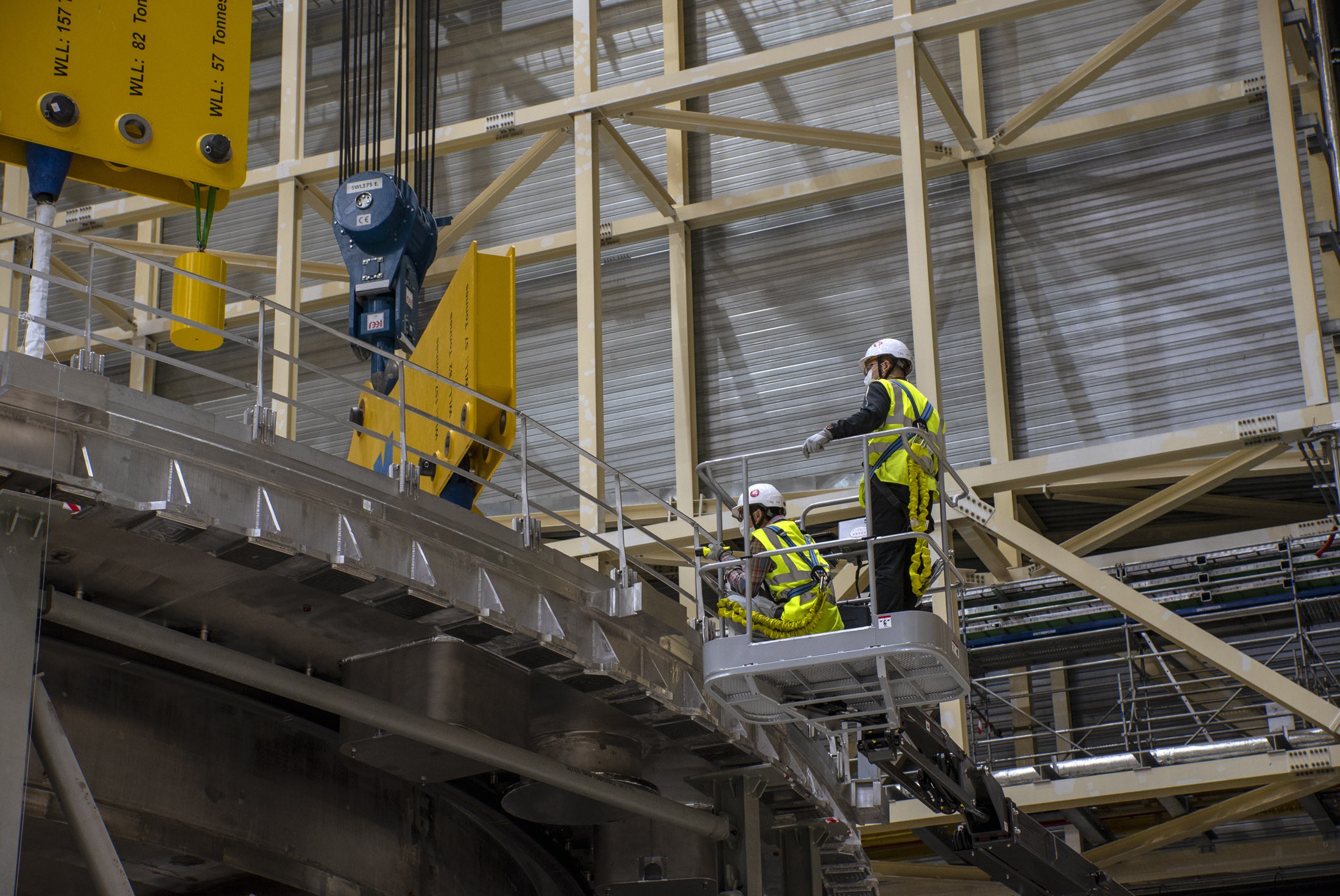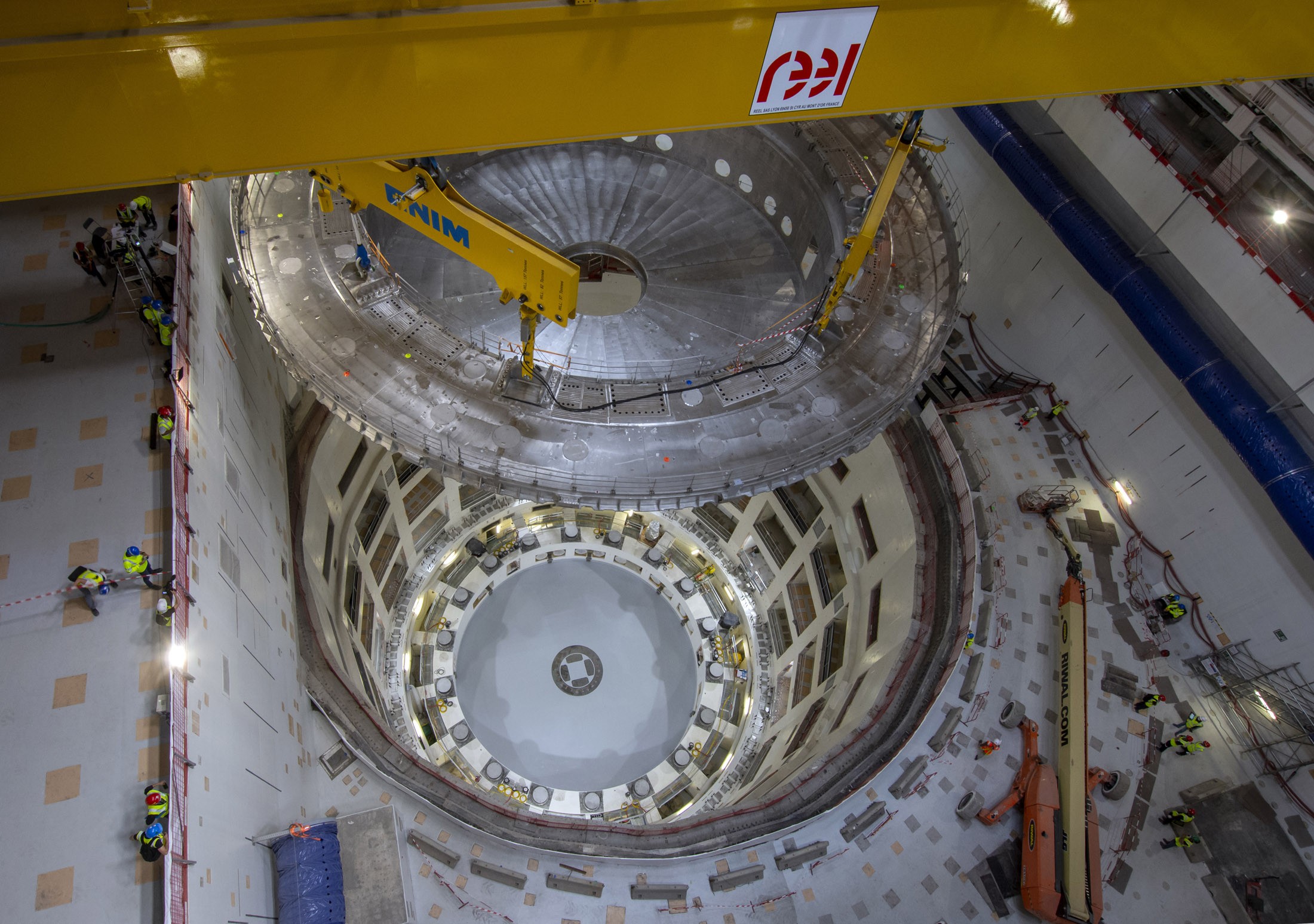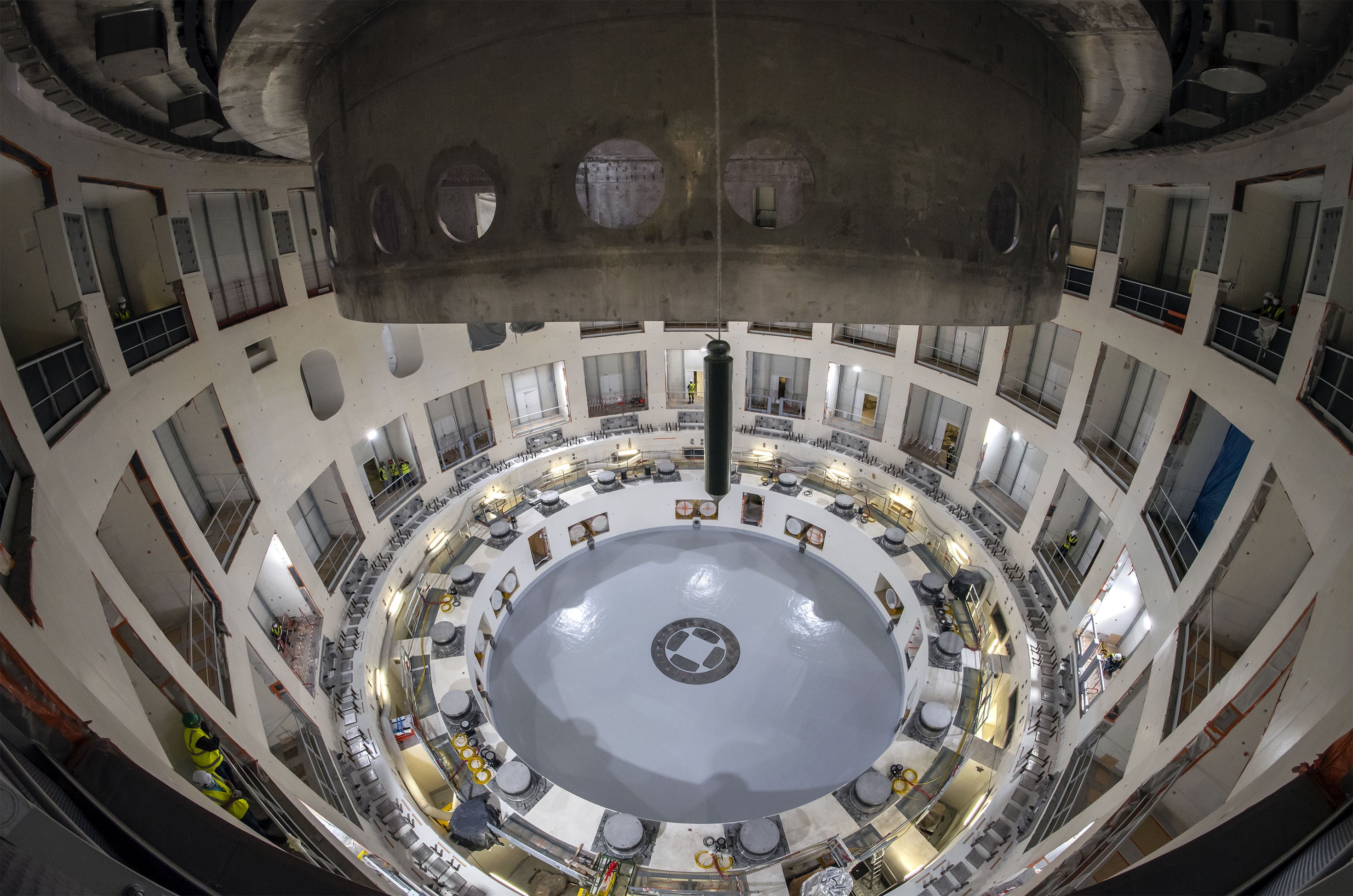"A moment that will live in our memories"
In the closing scene of the 1977 movie Close Encounters of the Third Kind, an alien spaceship hovers above an anxious and awestruck crowd of scientists and engineers. The ship looks like a giant soup bowl, with lights filtering through openings in its hull. As the ship slowly descends to the ground, there's an intense feeling of wonder and expectation among onlookers—a sense that a new era is dawning upon humankind.
On Tuesday 26 May, as the soup-bowl-shaped base of the ITER cryostat was gradually lifted from its frame, carried across the Assembly Hall to the Tokamak Building and eventually lowered into the Tokamak assembly pit, the Spielberg blockbuster was in everyone's mind.
Spielberg's movie doesn't say how long, and how carefully, the alien ship's crew tested and rehearsed procedures before delicately landing it. For the cryostat base, these preparatory steps took the better part of one week.
There, one of the most delicate phases of the operation slowly unfolded as the cryostat base descended into the deep concrete cylinder, almost brushing its inner walls, to be positioned within millimetre accuracy into its support system.




















